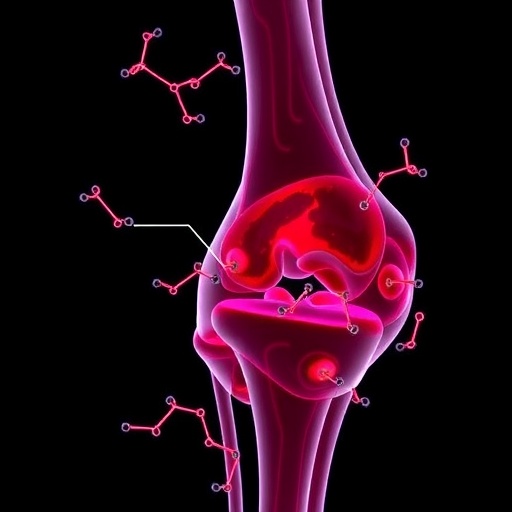Credit: The Ohio State University Wexner Medical Center
Most people aren’t eager to talk about how to improve bowel movements, but researchers at The Ohio State University Wexner Medical Center found the solution to common bowel issues may be as simple as boosting your feet on a stool.
“These toilet stools became popular through things like viral videos and social media, but there was really no medical evidence to show whether or not they are effective.” said Dr. Peter Stanich, assistant professor of gastroenterology, hepatology and nutrition at The Ohio State University Wexner Medical Center and College of Medicine. “This study shows that these simple devices may help symptoms like constipation, bloating and incomplete emptiness and can help people have more comfortable and effective bowel movements.”
The study, which is published in the Journal of Clinical Gastroenterology, was completed with healthy volunteers as participants. Despite this, 44 percent of participants reported increased straining and nearly a third said they had trouble completely emptying their bowels.
At the end of the four-week study, 71 percent of participants experienced faster bowel movements, and 90 percent reported less straining. “Importantly, at the conclusion of the study, two-thirds of participants said they would continue to use a toilet stool,” said Stanich, who co-authored the study.
The key to their effectiveness is body positioning. The body is designed to be in a squatting position, but sitting on a toilet creates a bend in the rectum that makes it more difficult to have complete bowel movements.
“Bowel movements are difficult to talk about and not a lot of people want to bring up their constipation,” said Rachel Shepherd, a physical therapist at Ohio State Wexner Medical Center who specializes in treating pelvic floor disorders. “But if there’s something as simple as changing the position by adding a stool, then that’s an easy fix that anyone can add in.”
One in six Americans experiences constipation. Having an easier time in the bathroom can prevent issues like bloating, constipation and hemorrhoids. Leaving bathroom troubles unresolved can lead to discomfort and more serious health issues such as damage to the pelvic floor and hernias.
“I would encourage everyone with bowel problems, constipation or diarrhea to make sure they discuss it with their doctor. Not only can your doctor likely help you feel better, but it may head off more serious disease down the road,” Stanich said.
###
Other researchers on the team include Dr. Rohan Modi, Alice Hinton, Dr. Daniel Pinkhas, Dr. Royce Groce, Dr. Marty Meyer, Dr. Gokulakrishnam Balasubramanian and Dr. Edward Levine.
Media Contact
Drew Schaar
[email protected]
614-932-9950
Original Source
http://bit.
Related Journal Article
http://dx.




